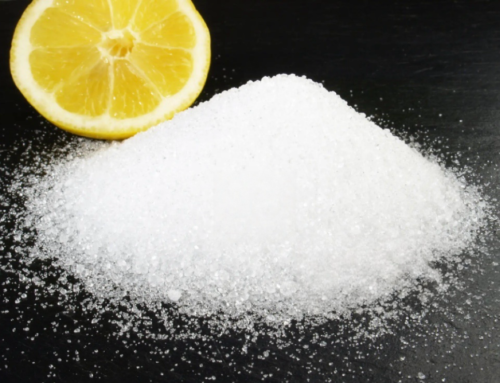 Sauces have existed for thousands of years as a gourmet companion. Do you know what ingredients enrich today’s sauce industry? The almighty ingredient is calcium ethanoate.
Sauces have existed for thousands of years as a gourmet companion. Do you know what ingredients enrich today’s sauce industry? The almighty ingredient is calcium ethanoate.
What is Calcium Ethanoate?
Calcium Ethanoate, also known as Calcium Acetate, is a salt derived from acetic acid, commonly found in vinegar and calcium carbonate. Its chemical formula is Ca(C2H3O2)2, and it appears as a white crystalline solid. The compound is odorless and possesses a slightly bitter taste. Due to its stability and non-toxic nature, Calcium Ethanoate is widely used in food products, including sauces.
What is the Use of Calcium Ethanoate in Sauce Industry?
Calcium ethanoate processes various functions in the sauce as follows:
Enhancing Sauce Stability and Shelf Life
One of the key reasons for Calcium Ethanoate’s popularity in the sauce industry is its ability to enhance stability and prolong shelf life. Sauces, especially those with high water content, are prone to spoilage and microbial growth. By adding Calcium Ethanoate as a preservative, sauce manufacturers can inhibit the growth of harmful bacteria, molds, and yeasts, thereby extending the product’s freshness and quality.
Improved Texture and Emulsification
Calcium Ethanoate also plays a crucial role in improving the texture and emulsification properties of sauces. When incorporated into the sauce formulation, it acts as a stabilizer, preventing ingredient separation and creating a smooth, consistent texture. This ensures that the sauce maintains its desirable appearance and mouthfeel throughout its shelf life, providing consumers with a satisfying culinary experience.
Acidity Regulation and Flavor Enhancement
In the sauce-making process, the pH level is a critical factor that affects taste, texture, and overall quality. Calcium Ethanoate acts as an acidity regulator, helping sauce manufacturers achieve the desired pH level. This regulation is essential because certain enzymes and flavors are influenced by acidity. By maintaining an optimal pH, the sauce’s flavors are enhanced, creating a well-balanced and palatable product.
Sodium Content Alternatives
The food industry has been increasingly focused on reducing sodium levels in various products, including sauces, to promote healthier choices for consumers. Calcium Ethanoate offers a viable solution in this regard. By incorporating this compound into sauce formulations, manufacturers can lower the sodium content without compromising taste and flavor. As a result, health-conscious consumers can enjoy their favorite sauces with reduced sodium intake.
Stability in High-Temperature Processing
Sauce production involves various processing methods, including high-temperature treatments for pasteurization and sterilization. Calcium Ethanoate exhibits remarkable stability under these conditions, making it an ideal ingredient for sauces that undergo heat processing. Its ability to withstand high temperatures ensures that the sauce retains its properties and quality throughout the manufacturing process.
Compatibility with Various Sauces
Another advantage of Calcium Ethanoate is its compatibility with a wide range of sauces. Whether it’s tomato-based sauces, fruit-based sauces, or savory gravies, this versatile compound seamlessly integrates into various formulations. Its neutral flavor profile ensures that it doesn’t overpower the sauce’s natural taste, making it a preferred choice for sauce manufacturers worldwide.
What Common Sauces contain Calcium Ethanoate?
Tomato-Based Sauces: Calcium Ethanoate can be added to traditional tomato sauces, such as marinara sauce, pizza sauce, and pasta sauces. It helps to regulate the sauce’s acidity, improving the flavor and texture while increasing its stability.
Fruit-Based Sauces: Sauces made from fruits, like cranberry sauce, apple sauce, or berry compotes, can benefit from Calcium Ethanoate. It aids in preserving the sauces’ freshness and natural fruit flavors.
Creamy Dressings: Calcium Ethanoate can be incorporated into creamy dressings, such as Caesar dressing or ranch dressing. It ensures that the dressing remains smooth and emulsified, preventing ingredient separation.
Barbecue Sauces: Barbecue sauces, both sweet and tangy varieties, can be improved with the addition of Calcium Ethanoate. It helps to balance the acidity and sweetness, creating a well-rounded flavor profile.
Savory Gravies: Calcium Ethanoate can be used in savory gravies, such as mushroom gravy, onion gravy, or beef gravy. It enhances the sauce’s texture and stability, ensuring it doesn’t separate during cooking and serving.
Spicy Sauces: Hot sauces and chili sauces can benefit from Calcium Ethanoate’s stability and preservation properties. It helps to maintain the sauces’ spiciness and flavor over time.
Asian Sauces: Sauces commonly used in Asian cuisine, like soy-based sauces, teriyaki sauce, or hoisin sauce, can be improved with the addition of Calcium Ethanoate. It helps to extend the shelf life of these sauces without altering their authentic flavors.
Chutneys and Relishes: Fruit chutneys and vegetable relishes can benefit from Calcium Ethanoate as it aids in preserving the vibrant flavors and texture of the ingredients.
Dipping Sauces: Dipping sauces like sweet and sour sauce, aioli, or honey mustard can be stabilized and made more consistent with the addition of Calcium Ethanoate.
Cheese Sauces: Calcium Ethanoate can be used in cheese-based sauces, such as cheese dips or fondue, to prevent separation and maintain a smooth, velvety texture.
In conclusion, Calcium Ethanoate has undoubtedly made many contributions to the sauce industry. Its multifaceted benefits, including enhanced stability, improved texture, acidity regulation, and reduced sodium content, have made it an indispensable ingredient in the formulation of various sauces. Reach out to us at [email protected]. Elevate your sauces to perfection today.




